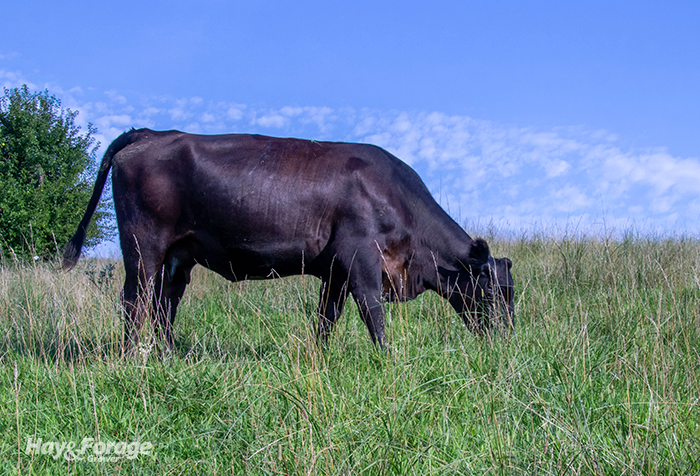
Between chopping corn silage, cutting the last crop of hay, and stockpiling fall forage this time of year, pasture maintenance and renovation projects can fall through the cracks. But making time for this work will likely prove to be worthwhile, and aiming to improve a portion of pasture every fall can help ease the burden long term.
“A strong, productive pasture is one of the most cost-effective ways to improve animal performance, extend grazing days, and reduce stored feed costs,” writes Shelby Gruss in a recent Growing Beef newsletter from the Iowa Beef Center. “Whether you’re adding clovers for nitrogen fixation and higher protein content, knocking back weeds, or fully reseeding, late summer is a great time to act.”
The state forage specialist with Iowa State University encourages farmers to renovate pastures by early September because it will give new seedings time to establish before a killing frost. Waiting until the spring risks more unpredictable weather and could delay grazing. And even though the success of a fall seeding hinges on available moisture, she suggests many areas have had sufficient rainfall this summer to support new plant growth. She provides the following five steps for fall pasture improvements.
Fix soil issues. Take a soil test. Gruss says low pH and nutrient deficiencies are common causes of stand thinning, and identifying them with a soil test will guide lime and fertilizer applications.
“Phosphorus is essential for seedling and root development, as well as nitrogen fixation in legumes,” Gruss writes. “Potassium supports root growth, water regulation, and photosynthesis.”
Evaluate stand condition. Assess whether the field could benefit from overseeding or if it requires renovation. Gruss recommends using the Natural Resource Conservation Service (NRCS) Pasture Condition Score Sheet to determine stand quality and identify potential areas of improvement.
In general, if the stand contains less than 50% desirable species, a full renovation is likely necessary; 50% to 70% desirable species may only warrant overseeding.
Eliminate competition. Before overseeding, mow forage or graze it short to reduce plant competition and residue. Pasture renovation, on the other hand, will likely require an herbicide application. “When overseeding, the goal is to set back existing vegetation enough to give new seedlings a chance to establish. For full renovation, the goal is to completely terminate the existing stand,” Gruss states.
Choose suitable species. Select forages that are suited to your soils and align with your grazing goals. When seeding legumes, Gruss encourages farmers to inoculate seed with the correct rhizobia to facilitate nitrogen fixation.
Mind seeding specifics. Most cool-season forages require a 1/4- to 1/2-inch seeding depth, but this can vary by soil texture and seed size. Seeding rates can also vary according to planting method, planting conditions, and forage species, but Gruss says broadcasting generally requires higher rates than drilling. Base seeding rates on pure live seed (PLS).
Maintain momentum
The overseeding and renovation processes don’t stop once seed is in the ground. Gruss recommends rotationally grazing livestock to maintain the momentum of pasture improvements by managing regrowth and avoiding overgrazing. She also encourages farmers to regularly test soil and continue topdressing phosphorus and potassium as needed.
“Pasture systems do recycle many of the nutrients, but not all,” Gruss states. “Periodically (two to three years) soil testing your pasture is important. If legumes begin to decline over time, plan for another renovation when needed.”

